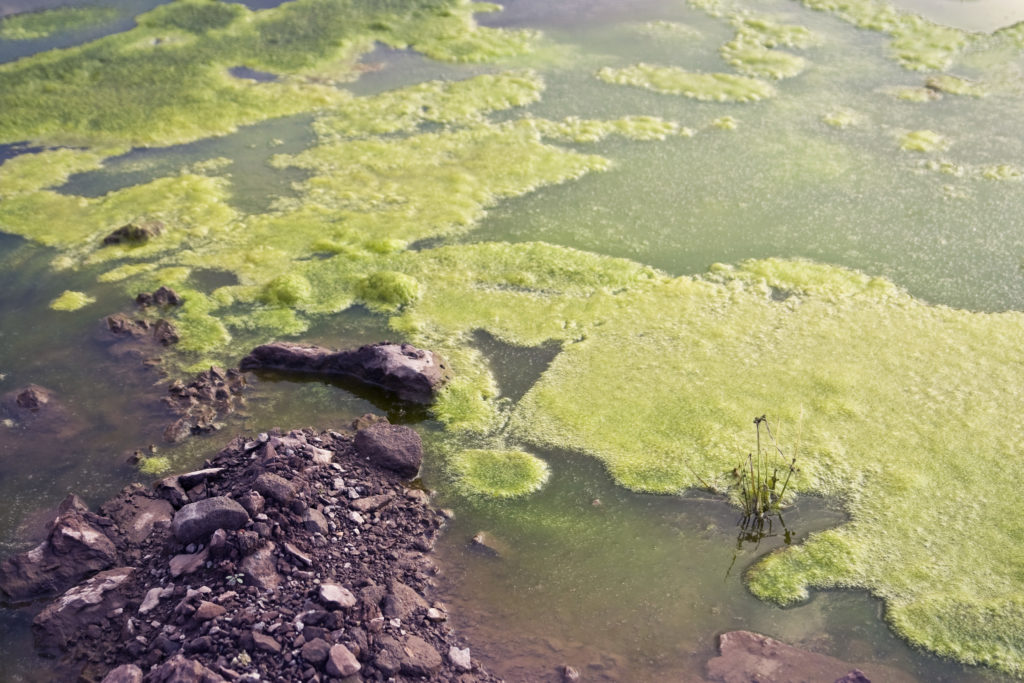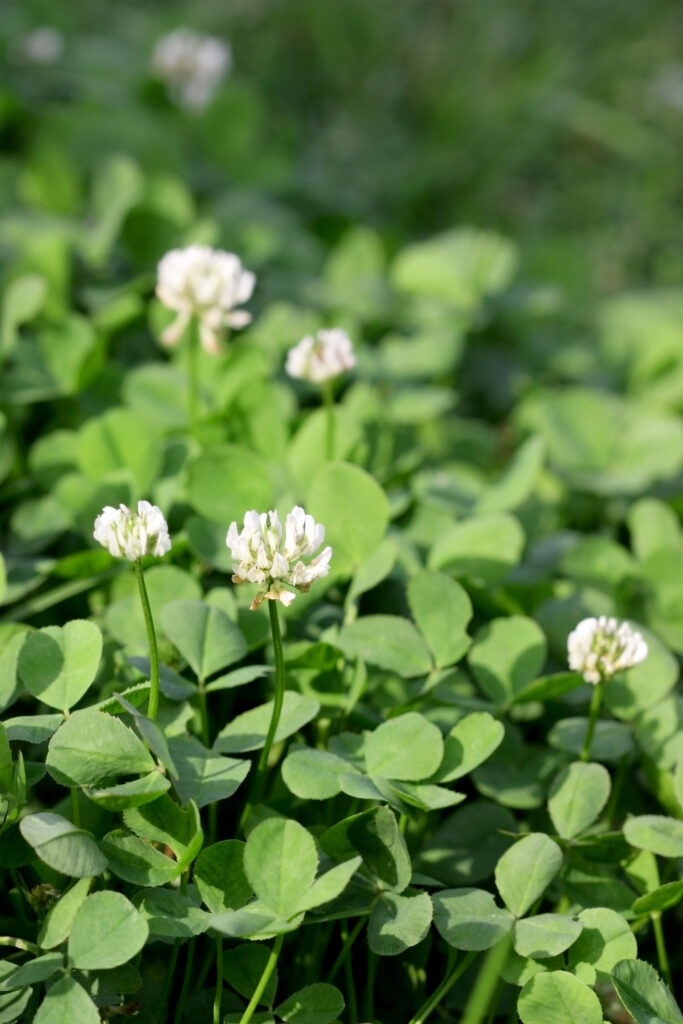
Excerpt from our 16-page Greenscapes Guide. Click here to download.
Let Nature Provide the Nutrients
Fertilizers contain nitrogen, phosphorous, potassium, and other elements that help build strong roots and plants. But as the saying goes, too much of a good thing can be bad.
Many of us unknowingly waste time and money by putting too much of the wrong kind of fertilizer on our landscapes, often at the wrong times. This is partially because our soil is not properly balanced (that is, it’s too acidic or alkaline) to allow plants to absorb the nutrients they need in the first place. Not only do your lawn and wallet suffer, the environment does as well.
Generally speaking, lawns need much less fertilizer than is advertised. Fertilizers that are not immediately absorbed by plants pollute our water through stormwater runoff. These nutrients can contaminate our drinking water and cause rapid algal growth in ponds and bays. Algal blooms make swimming and boating unpleasant, block sunlight and deplete oxygen, and kill fish and other animals.
Save time and money by following these helpful guidelines to provide lawns with the nutrients they need to be healthy, beautiful and easy to maintain.

Have Your Soil Professionally Tested
The foundation of a Greenscapes lawn is balanced soil that is nutrient-rich. If your soil isn’t healthy, your lawn and other plants aren’t healthy. Find out your soil’s pH and other characteristics by sending a sample to the soil lab at the University of Massachusetts (call 413-545-2311 or visit ag.umass.edu/services/soil-plant-nutrient-testing-laboratory for instructions). For a small fee, you will receive an analysis and recommendations for improving your soil. Some local nurseries also provide soil sample analyses.
Add Lime if Your Soil is Acidic
The soil pH of a healthy lawn should be between 6.0 and 7.0. Some landowners may find that their soil’s pH is below 7, which means it is acidic. Acidic soil is more hospitable to weeds than grass because it prevents nutrient absorption. Adding lime will remedy this problem.
Top Dress With Compost
If a soil analysis shows that your lawn needs nutrients, a thin layer of compost (1/2” or less) will add organic materials that help the soil retain moisture. High-quality compost is available in nurseries by the bag or in bulk, or you can make your own. The best time to treat your lawn with compost is in the spring. You will need about one cubic yard of compost per 1,500 to 2,000 square feet of lawn area. For more info on composting, see page 7.

Clover is a Free Source of Nutrients
Dutch white clover is a beautiful low-growing, broadleaf species that used to be a welcome addition to many lawns. This hardy perennial smothers weeds, prevents erosion, retains moisture and naturally “fixes” nitrogen in your soil. Clover is tough enough to withstand foot traffic and offers beautiful dark green foliage and small white flowers. If bees are a concern to your family, control the blooms with frequent mowing.
If Necessary, Use Organic Fertilizers
If you follow the guidelines on this page, chances are your lawn already gets enough nutrients. However, if your soil test shows that you still need more nutrients, choose an organic fertilizer that will supplement your soil as well as “feed” your plants. Be sure to: (1) use an organic, slow release, water-insoluble fertilizer at the recommended dose; (2) don’t spread the fertilizer if heavy rain is predicted; (3) evenly distribute the fertilizer using a mechanical spreader at the lowest setting, going over the area two or three times; and (4) sweep up fertilizer that accidentally lands on paved surfaces.
TIP: Fertilizing in the spring results in more weeds and more mowing
Fertilize In the Fall, If At All
Fertilizing in the fall helps grass plants build deep, strong roots instead of a quick growth of grass blades.
Organic Fertilizers and Synthetic Fertilizers are Not the Same
Synthetic fertilizers are more concentrated which makes it is easier to over fertilize, burning the plant and potentially harming soil organisms. Synthetic fertilizers also tend to be more water-soluble, leaching out of the soil faster, polluting our water resources. Because organic fertilizers release nutrients more slowly, organic fertilizers are more effective and don’t contribute as much to water pollution.
